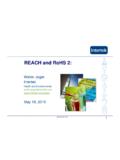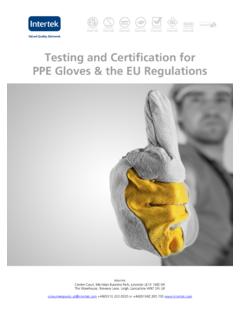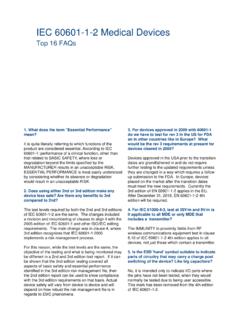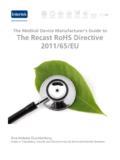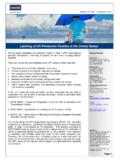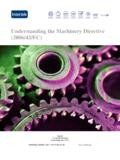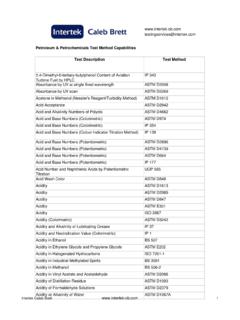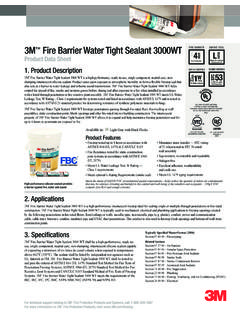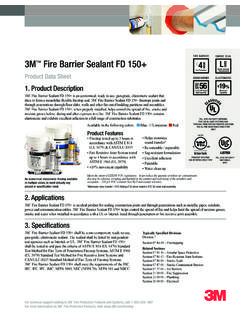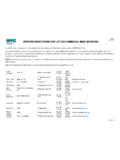Transcription of SOFTLINES CARE LABEL RECOMMENDATIONS - …
1 SOFTLINESCARE LABEL RECOMMENDATIONS Weaving quality into your clothing, textiles and footwear2 care LABEL RECOMMENDATIONSASSURE LASTING QUALITY OF YOUR TEXTILES & APPARELCare labels provide information to consumers and apparel caregivers about the best cleaning procedures to be used for that particular combination of fabric, thread, decoration and construction techniques. Following the instructions on care labels provides assurance that the appearance and the fit of the garment will be maintained after repeated cleaning manufacturers, importers and retailers, your brand value is dependent on the enduring quality of your products.
2 How do you ensure that care labels placed on your product are understandable for consumers and apparel caregivers, while simultaneously meeting the national and international trade requirements? Many countries have mandatory standards for care LABEL instructions that apply to either apparel or soft home furnishing products. Some common countries are: Australia: Textiles - care Labeling Canada: care Labeling of Textiles (voluntary system and based on the industry best practice) China: Chinese Textile - care Labeling Code Using Symbols European Union: Textiles - care Labeling Code Using Symbols Japan: care Labeling of Textile Goods USA: care Labeling of Textile Wearing Apparel and Certain Piece Goods as amended - 16 CFR 4233 YOUR CHALLENGESAt intertek , we work with brands and retailers around the world to assure their textile and apparel products maintain quality and durability through care LABEL testing.
3 With our thorough understanding and expertise in the industry, we offer care LABEL verification or recommendation, supported by related LABEL testing Appearance after washing/ drycleaning Colourfastness to washing/ drycleaning Colourfastness to chlorine bleaching Colourfastness to non-chlorine bleaching Dimensional stability to washing/ drycleaningCare LABEL verification or recommendation Content on care LABEL Placement of care LABEL Language of labelling4 OUR SOLUTIONSAUSTRALIACARE LABEL REQUIREMENTSP ermanent care LABEL Requirement in Australia is that the wording of the LABEL shall be in English and clearly Position of LABEL attachment must be clearly visible or accessible.
4 B. For articles which are packaged, displayed or folded in such a way that the information is inaccessible, an extra care LABEL must be given on a wing ticket or adhesive LABEL , or in a pamphlet accompanying the For a LABEL sewn in more than one side, the LABEL shall have similar shrinkage characteristics to the base For an adhesive LABEL , it should not produce any bubbling or delamination when the garment is subject to cleansing labeling system consists of:1) Washing temperature (cold, warm, hot, very hot, boil)2) Agitation (hand wash, short machine wash, gentle machine wash, machine wash) Note: Where appropriate, phrases stating washing temperature and agitation may be combined to form a concise phrase, warm hand wash, hot ) Drying method (may be tumble dried - cold/warm/hot, drip dry, dry flat, line dry)4) Bleaching instruction5) Ironing (do not iron, cool, warm, hot, steam)6) Drycleaning methods are expressed in symbol as listed in below table.
5 DRYCLEANING SYMBOLD ryclean in any solvent normally used for in perchloroethylene, and all solvents listed for the symbol Dryclean in accordance with but with restricted water amount or mechanical action or temperature during cleaning or in white spirit or in accordance with but with restricted water amount or mechanical action or temperature during cleaning or not dryclean. These symbols are to be used in conjunction with the phrase (Drycleanable / Dryclean only/ Drycleaning recommended).5 CANADACARE LABEL REQUIREMENTSP roviding care information is voluntary for the Canada market and is based on the CGSB standard that was revised in 2003.
6 The current version has symbols in black and white replacing the previous traffic light colors of green, amber, and red. The new standard is harmonized with the American and international standards for care labeling using five basic symbols which must appear in the sequence: washing, bleaching, drying, ironing, professional textile care . Any additional information must appear in both English and care BleachDryGUIDE TO APPAREL care SYMBOLST umble Dry CyclesHeat SettingIron-Dry or SteamPetroleum Solvent OnlyFNo Steam (Added to Iron)200 C(390F)High150 C(300F)Medium110 C(230F)LowMachine Wash CyclesNormalPermanent PressDelicate/GentleHand WashDry-clean - Normal CyclePAny Solvent Except TrichloroethyleneAny HeatHighMediumLowNo Heat/AirDrip DryIn the ShadeNormalPermanent PressDelicate/GentleLine Dry/Hang to DryDry FlatAny BleachWhen NeededOnly Non-Chlorine Bleach When NeededDo Not Wring(Maximum)Symbol(s)(200F)95 C70 C60 C50 C40 C30 C(160F)(140F)(120F)(105F)(65F-85F)
7 Water TemperaturesWWet-CleanDo Not Iron or PressDo Not Dry-cleanDo Not WashDo Not Dry(Used with Do Not Wash)Do Not Tumble DryDo Not BleachDo Not Wet-Clean6 CHINACARE LABEL REQUIREMENTSN ational Textile Base Standard Technical Sub-committee discussed and voted for revision of GB/T 8685 in the Huangshan Annual Technical Meeting in April 2008. An updated standard GB/T 8685-2008 was issued and effective from 1st March permanent LABEL shall include symbols of washing, bleaching, drying, ironing and professional cleaning in sequence. Sufficient and appropriate symbols shall be used to ensure that garment will not be damaged during cleaning process.
8 Additional text in Chinese can be used to clarify the TEXTILE care PROCESS- do not ironIRONING PROCESS- iron at a maximum sole-plate temperature of 200 C- iron at a maximum sole-plate temperature of 150 C- iron at a maximum sole-plate temperature of 110 C without steam steam ironing may cause irreversible damage- line drying- drip line drying- flat drying- drip flat drying- line drying in the shade- flat drying in the shade- drip flat drying in the shadeNATURAL DRYING PROCESS- drip line drying in the shadeSYMBOLSYMBOL- professional wet cleaning very mild process- do not dry clean- professional dry cleaning in hydrocarbons (distillation temperature between 150 C and 210 C, flash point between 38 C and 70 C) normal process- professional dry cleaning in hydrocarbons (distillation temperature between 150 C and 210 C, flash point between 38 C and 70 C)
9 Mild process- professional dry cleaning in tetrachloroethene and all solvents listed for the symbol F normal process- professional dry cleaning in tetrachloroethene and all solvents listed for the symbol F mild process- professional wet cleaning mild process- professional wet cleaning normal process SYMBOLBLEACHING PROCESS- only oxygen / non-chlorine bleach allowed- any bleaching agent allowed- do not bleach TUMBLE DRYING PROCESS- tumble drying possible- normal temperature - maximum exhaust temperatue 80 C- do not tumble dry- tumble drying possible- drying at lower temperature- maximum exhaust temperature 60 C- maximum washing temperature 95 C normal processWASHING PROCESS- do not wash- maximum washing temperature 40 C normal process- maximum washing temperature 40 C mild process- maximum washing temperature 40 C very mild process- maximum washing temperature 60 C mild process- maximum washing temperature 30 C very mild process- maximum washing temperature 60 C normal process- maximum washing temperature 30 C normal process- maximum washing temperature 30 C mild process- maximum washing temperature 50 C mild process- maximum washing temperature 70 C normal process- maximum washing
10 Temperature 50 C normal process- wash by hand maximum temperature 40 CSYMBOLSYMBOLSYMBOL77 The ISO care labeling standard ISO 3758 was prepared by Technical Committee ISO/TC 38, Textiles, Subcommittee SC2, Cleansing, finishing, and water resistance tests. The care symbols used in this standard are based on the Ginetex labelling system, and the symbols are registered as international trademarks. GINETEX has 18 member countries, the national committees are given a mandate to represent GINETEX to ensure the correct use of the care symbols in their national territory. For details, please visit The first and second editions ISO 3758 were published in 1991 and 2005.
